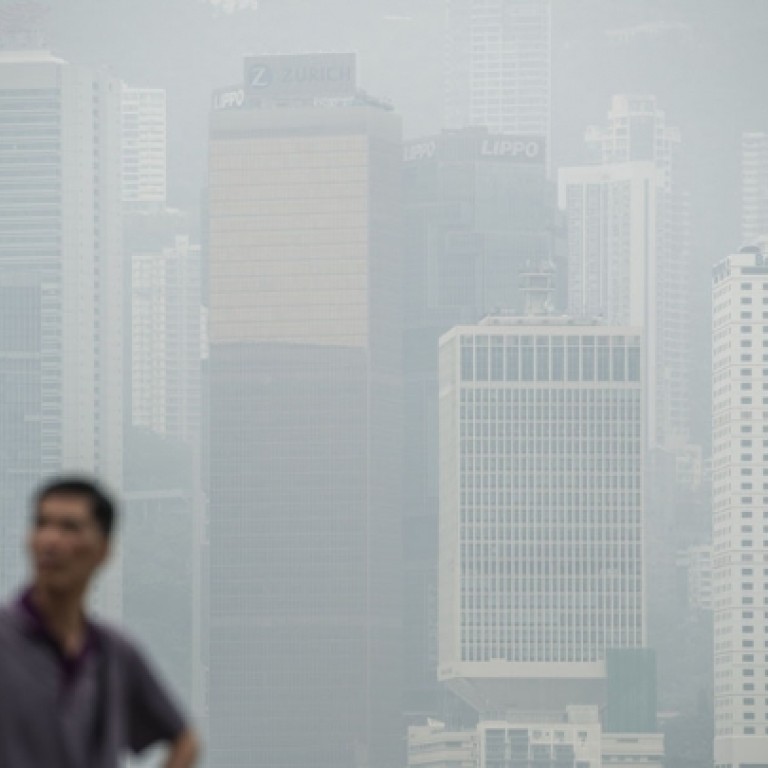
Air pollution kills 1,600 Hongkongers in first half of 2013
Premature death toll grows amid increase in levels of four harmful pollutants in city’s air
Worsening air pollution caused more than 1,600 premature deaths in the city during the first half of the year, according to a study by an air pollution concern group. The Clean Air Network's research found that levels of four dangerous air pollutants rose in the first six months of 2013 from the same period last year.
All four pollutants - nitrogen dioxide, suspended particulates PM10, fine particulates PM2.5 and sulphur dioxide - also exceeded the World Health Organisation's annual average air quality guidelines at all 14 air monitoring stations citywide, with the exception of nitrogen dioxide levels in Tap Mun.

The study was based on data collected by the Environmental Protection Department from January to June.
Levels of nitrogen dioxide - an important indicator of roadside air pollution - increased by double-digit percentages at 10 of the 14 air monitoring stations. The highest increase was in Central and Western district, where the level rose 22 per cent to 65 micrograms per cubic metre; it was 53mcg last year. The WHO's stipulated safe level is 40mcg. The areas worst hit by roadside pollution remained Central, Causeway Bay and Mong Kok. The nitrogen dioxide levels in those areas respectively measured 127, 119 and 118mcg per cubic metre. Kwai Chung suffered the highest level of sulphur dioxide - a key marker of marine emissions. It rose a dramatic 64 per cent to 24mcg per cubic metre. The WHO's safe level is 5mcg.
Clean Air Network chief executive Kwong Sum-yin urged the government to immediately replace old commercial diesel vehicles and restrict marine vessels to fuels with a sulphur content of less than 0.5 per cent at berth.
But she expected air quality to continue worsening in the second half of the year.
"The government has proposed phasing out old diesel vehicles, but the plan is only inching forward."
But while pollution has worsened overall, air quality in Tung Chung appeared to have improved over the past six months. Although they remained above the WHO's air quality guidelines, the PM10, PM2.5 and sulphur dioxide levels in the area went down 10 per cent to 40mcg per cubic metre; 13 per cent to 24mcg, and 3 per cent to 12mcg, respectively. The WHO's safe levels for PM10 and PM2.5 are 20mcg and 10mcg per cubic metre, respectively. Kwong said the decrease in air pollution in Tung Chung was because regional air quality in the Pearl River Delta had improved.
In response to the findings, the Environmental Protection Department said pollution levels should be compared over the years rather than annually, because of climate fluctuations. From 2006 to last year, except for the level of nitrogen dioxide, which rose 23 per cent, levels of all three other pollutants fell by up to 52 per cent, it said. The government already had a series of measures in the pipeline to curb nitrogen dioxide levels, it added.
